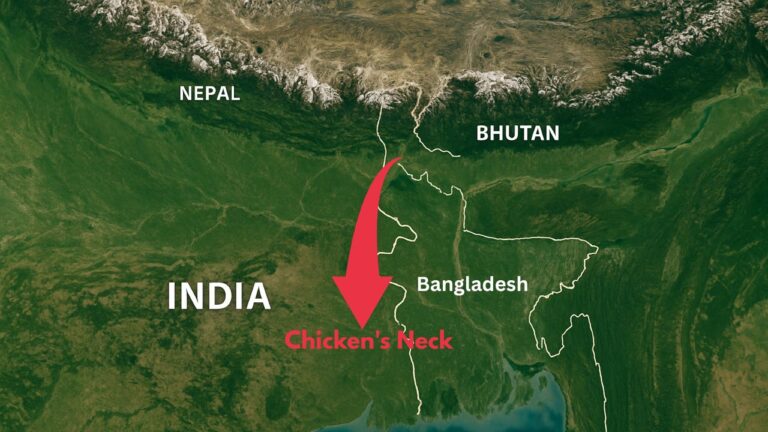
Road to Internationalizing Indian Rupee: Benefits, Challenges, and Lessons from China
The internationalization of a currency is a significant milestone for any nation’s economy. In the case
of India, the process of internationalizing the rupee has been gradual, with limited progress
compared to other global currencies. In this article, we will explore the current status of the rupee’s
internationalization, the benefits and challenges it entails, and how India can learn from China’s
successful experience in internationalizing the Renminbi.
Table of Contents
Current Status of Indian Rupee
Despite being the official currency of India, the rupee’s international presence is modest. Its daily
average share in the global foreign exchange market hovers around 1.6%, while India’s share in
global goods trade is merely 2%. While some measures have been taken to promote
internationalization, such as enabling external commercial borrowings in rupees and encouraging
trade in rupees with certain countries, the progress has been limited.
Challenges for the Rupee’s Internationalization
Several challenges stand in the way of the rupee’s internationalization
- Exchange Rate Volatility: An internationalized rupee would be subject to greater exchange
rate fluctuations, which could impact trade competitiveness and financial market stability. - Capital Flight and Financial Stability: Opening up the rupee to international markets may
lead to capital flight if investors lose confidence in the currency, affecting foreign exchange
reserves and monetary policy management. - Capital Controls: India’s capital controls limit foreign investments and hinder the rupee’s
widespread adoption as an international currency. - Competing Currencies: Established global currencies like the US dollar, euro, and yen
dominate international transactions, making it challenging for the rupee to gain market
share. - Confidence and Perception: The credibility and stability of India’s economic and monetary
policies play a vital role in building trust in the rupee.
Benefits of Internationalizing the Rupee
Internationalizing the rupee offers various advantages for India’s economy:
- Reduced Dependency on Foreign Currencies: A globally accepted rupee would decrease
India’s reliance on foreign currencies for international trade and financial transactions,
reducing exposure to currency fluctuations. - Increased Global Trade: Transacting directly in rupees would streamline international trade,
reducing costs and simplifying cross-border transactions. - Enhanced Financial Integration: A widely recognized rupee would attract foreign investors,
increasing investment opportunities and liquidity in Indian financial markets. - Improved Monetary Policy Effectiveness: Internationalization allows the Reserve Bank of
India (RBI) to use the exchange rate as a tool to manage inflation and stimulate economic
growth more effectively. - Strengthened Regional Influence: A globally accepted rupee would enhance India’s position
as a major economic player in Asia, promoting trade and investment within the region. - Diversification of Reserves: The rupee’s internationalization would make it an attractive
reserve currency for central banks and foreign governments, adding stability to their
portfolios. - Development of Financial Services: As the rupee gains acceptance, financial services linked
to rupee-denominated transactions, such as trade financing and currency hedging, would
see growth.
Learning from China’s Experience
China’s Renminbi (RMB) provides valuable lessons for India’s rupee internationalization:
- Phased Approach: India can follow China’s gradual and calibrated approach to
internationalize the rupee, allowing for the necessary economic and financial conditions to
be in place. - Expand Trade Ties: India can leverage its existing trade relationships with countries in the
region and beyond to enhance the use of the rupee for trade and investment.
Specific Reforms to Internationalize the Rupee
To expedite the internationalization process, India can implement the following reforms:
- Full Convertibility: Move towards full capital account convertibility by 2060, allowing free
movement of financial investments between India and abroad. - Deeper Bond Market: Develop a robust bond market that offers more investment options in
rupees for foreign investors and trade partners. - Encourage Rupee Transactions: Optimize trade settlement formalities to encourage
exporters and importers to transact in rupees. - Sign Currency Swap Agreements: Enter into currency swap agreements with trading
partners to settle transactions in rupees. - Offer Tax Incentives: Provide tax incentives to foreign businesses for using the rupee in their
operations in India. - Ensure Currency Management Stability: Maintain consistent and predictable issuance and
retrieval of notes and coins to instill confidence. - Pursue Tarapore Committee’s Recommendations: Implement reforms suggested by the
Tarapore Committee, such as reducing fiscal deficits, inflation rates, and banking non-
performing assets.
Conclusion
Internationalizing the rupee presents both challenges and opportunities for India’s economy. By
learning from China’s experience and pursuing a phased approach with necessary reforms, India can
gradually increase the global acceptance and usage of the rupee, enhancing its role as a major player in the international financial arena. However, careful management, transparency, and stability are vital to building confidence and trust in the rupee as it ventures into the global market.






